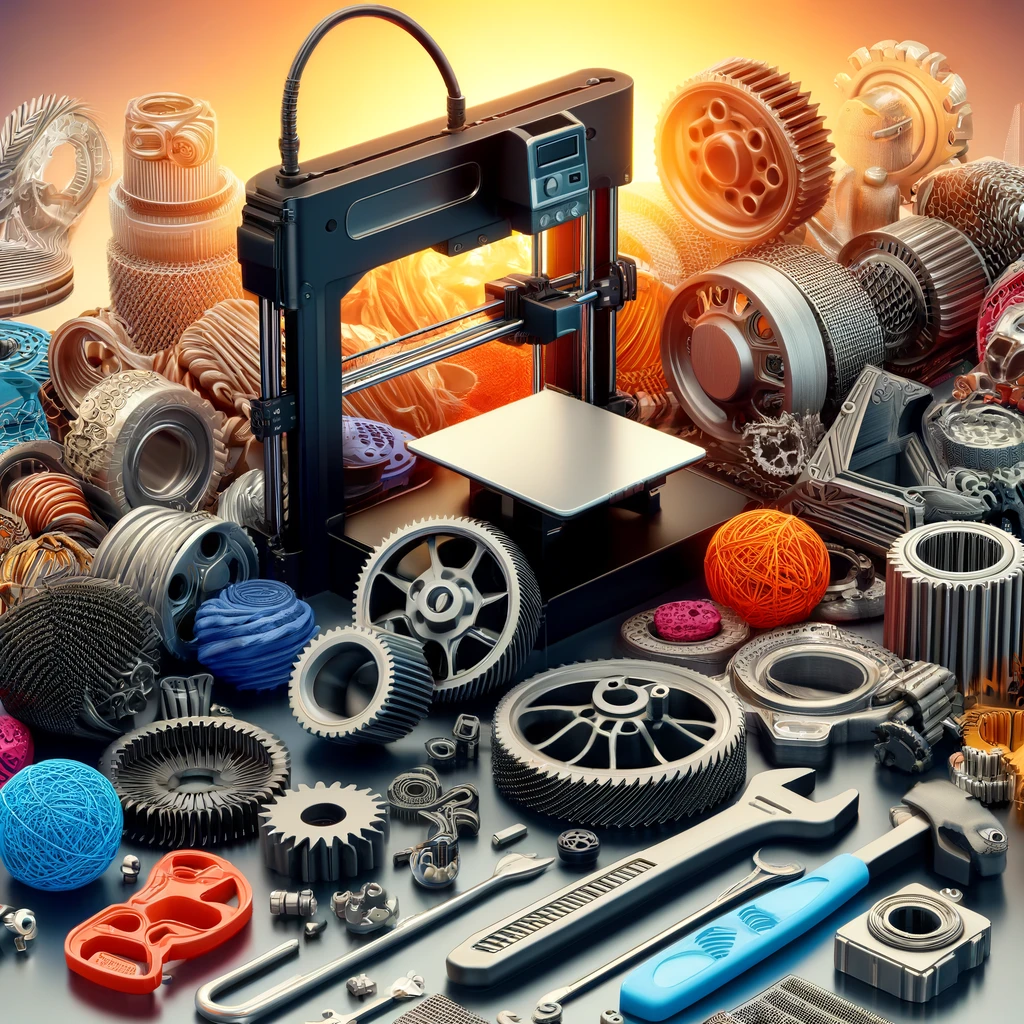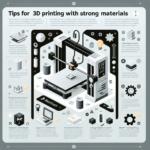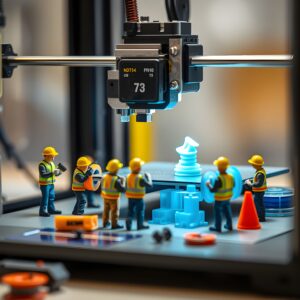Which 3D Printing Material is the Strongest? A Comprehensive Guide

The strength of a 3D-printed object depends heavily on the material used. As 3D printing evolves, the availability of materials with enhanced mechanical properties continues to grow. Whether you’re designing for aerospace, automotive, or consumer goods, understanding the strongest 3D printing materials can help you select the right option for your project. This guide provides a detailed look at the strongest 3D printing materials, their properties, and applications.
Key Factors Defining Material Strength
When determining the strongest 3D printing material, it is important to consider several factors:
-
Tensile Strength: Measures how much force a material can withstand when stretched.
-
Impact Resistance: Indicates how well a material absorbs energy from sudden impacts.
-
Flexural Strength: Refers to a material’s ability to resist deformation under load.
-
Thermal Resistance: Highlights how a material performs under high temperatures.
-
Chemical Resistance: Defines its ability to withstand corrosive environments.
Understanding these properties helps in selecting the best material for specific needs.
The Strongest 3D Printing Materials
Below are some of the strongest materials available for 3D printing:
1. Carbon Fiber Reinforced Polymers (CFRP)
Carbon fiber composites are among the strongest and most durable materials for 3D printing. These are made by infusing polymers with carbon fibers, significantly improving strength and stiffness.
-
Tensile Strength: Up to 700 MPa
-
Applications: Aerospace components, automotive parts, and sporting goods.
-
Pros: High strength-to-weight ratio, excellent dimensional stability.
-
Cons: Expensive, abrasive to 3D printer nozzles.
2. Polycarbonate (PC)
Polycarbonate is well-known for its impact resistance and heat tolerance. It is one of the strongest thermoplastics used in 3D printing.
-
Tensile Strength: Around 70 MPa
-
Applications: Engineering prototypes, medical devices, and electrical housings.
-
Pros: High durability, resistant to high temperatures.
-
Cons: Requires high printing temperatures and enclosed chambers.
3. Nylon (Polyamide)
Nylon is another strong material known for its flexibility and resilience.
-
Tensile Strength: Around 50-75 MPa
-
Applications: Gears, bearings, and industrial parts.
-
Pros: High wear resistance, excellent for functional parts.
-
Cons: Prone to moisture absorption, requiring dry storage.
4. Ultem (PEI – Polyetherimide)
Ultem is a high-performance polymer known for its exceptional thermal and chemical resistance.
-
Tensile Strength: Up to 100 MPa
-
Applications: Aerospace, medical tools, and high-end engineering.
-
Pros: Strong, heat-resistant, and lightweight.
-
Cons: Expensive, requires advanced 3D printers.
5. Metal Filaments (Stainless Steel, Titanium)
Metal filaments offer unparalleled strength, making them suitable for industrial-grade parts.
-
Tensile Strength: Varies by alloy but can exceed 1,000 MPa (e.g., titanium).
-
Applications: Aerospace, dental implants, and tooling.
-
Pros: Extreme durability, heat resistance.
-
Cons: Expensive, often requires post-processing.
Comparison of Material Strengths
| Material | Tensile Strength | Heat Resistance | Best For |
|---|---|---|---|
| Carbon Fiber | 700 MPa | High | Aerospace, automotive |
| Polycarbonate | 70 MPa | Moderate | Prototypes, housings |
| Nylon | 50-75 MPa | Moderate | Gears, bearings |
| Ultem | 100 MPa | High | Aerospace, medical tools |
| Metal Filaments | 1,000+ MPa | Very High | Aerospace, implants |
Applications of Strong 3D Printing Materials
Aerospace
In aerospace, lightweight yet strong materials like carbon fiber composites and Ultem are commonly used. These materials meet stringent requirements for strength and heat resistance.
Automotive
For the automotive sector, durable materials such as Nylon and Polycarbonate are preferred for producing parts like brackets, clips, and prototypes.
Medical
Ultem and certain grades of Nylon are used in the medical industry for tools and surgical guides, thanks to their biocompatibility and sterilization capabilities.
Industrial
Metal filaments and carbon fiber composites are widely utilized in industrial applications, such as creating molds, fixtures, and functional parts.
Tips for Printing with Strong Materials
Printing with strong materials often requires specialized equipment and preparation. Follow these tips:
-
Use a High-Temperature Printer: Many strong materials, like Polycarbonate and Ultem, need higher extrusion temperatures.
-
Enclosed Build Chambers: Prevent warping by maintaining consistent heat.
-
Hardened Nozzles: Carbon fiber and metal filaments are abrasive; use nozzles designed for durability.
-
Proper Storage: Materials like Nylon absorb moisture and must be stored in dry conditions.
-
Post-Processing: For metal filaments, post-processing like sintering may be required.
Future Trends in 3D Printing Materials
The future of 3D printing materials is promising, with ongoing advancements in composites, polymers, and metals. Materials combining high strength and lightweight properties are particularly in demand for aerospace and automotive applications. Biodegradable and recyclable options are also gaining traction, aligning with global sustainability efforts.
FAQs
1. What is the strongest material for FDM printing?
Carbon fiber composites are considered the strongest for FDM printing, offering high tensile strength and stiffness.
2. Can Nylon be used for load-bearing parts?
Yes, Nylon’s flexibility and tensile strength make it suitable for load-bearing components like gears and brackets.
3. Are metal filaments compatible with standard 3D printers?
No, metal filaments require specialized printers capable of handling high temperatures and post-processing.
4. Is Polycarbonate stronger than ABS?
Yes, Polycarbonate is significantly stronger and more heat-resistant than ABS, making it suitable for demanding applications.
5. How can moisture affect 3D printing materials?
Moisture absorption, especially in materials like Nylon, can lead to poor print quality and weakened mechanical properties.
Choosing the strongest 3D printing material depends on the specific requirements of your project. Whether it’s tensile strength, thermal resistance, or chemical durability, the right material ensures the success of your design. As 3D printing technology advances, the range of strong and versatile materials will continue to expand, offering endless possibilities for innovation.
Visit our other website: https://synergypublish.com





